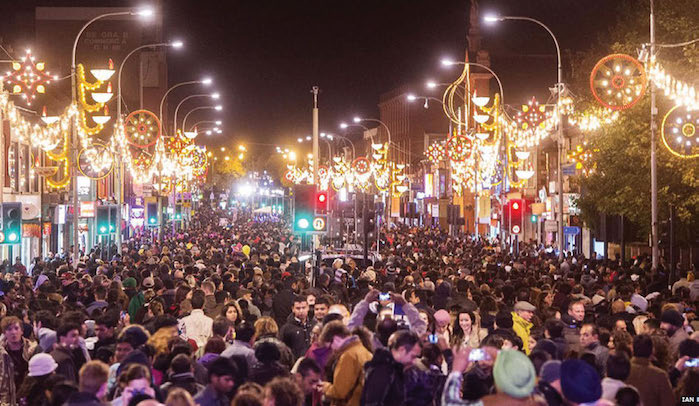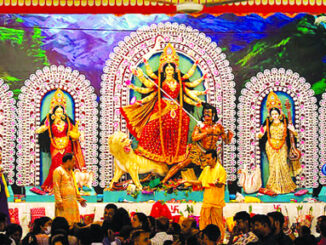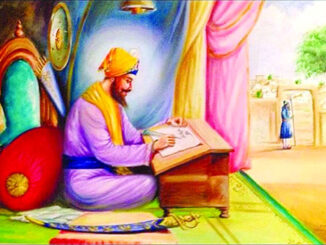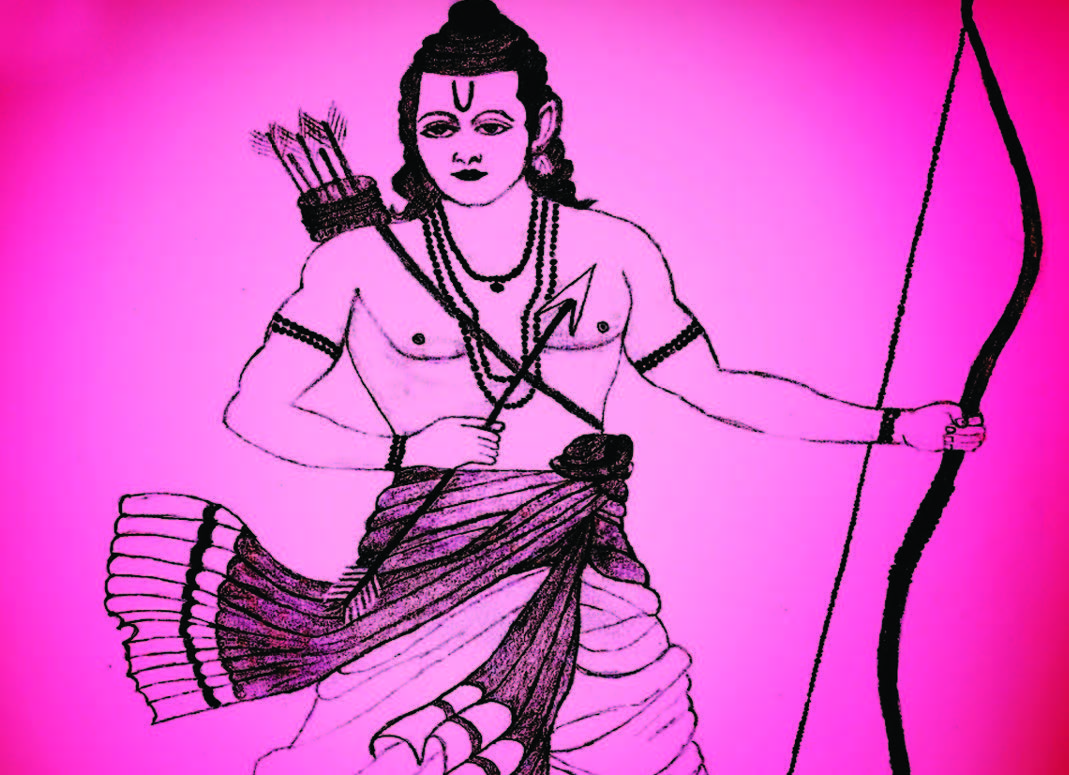
The growing ethnic and cultural diversity of Hindu religion throughout the world provides the opportunity to participate in the celebrations and rituals of Diwali festival that enhances the feelings of being part of a close-knit group of Indians. Most Diwali celebrations around the world focus on family and friends and it is a time to reflect on the past and envision for a future, perhaps, in a world where people live together in harmony.
Outside India also, as Diwali approaches, people clean their home to escape bad luck in the upcoming year and families gather for a feast and stay up late, celebrating with the help of crackers and sweets. They believe that the Hindu goddess of good luck visits homes that are brightly lit. Children make “diyas” which are small clay lamps to light and bring the good luck goddess to their home so they can receive new clothes and toys. One family may have many thousand of these little diyas decorating their home.
Diwali in Mauritius
Diwali is celebrated with great enthusiasm at Mauritius as this country have great Indian crowd. The Diwali celebrations at Mauritius is as good as in India. The festival of lights- Diwali is celebrated in
October/November. Diwali marks the victory of Rama over Ravana and also commemorates Krishna’s destruction of the demon Narakasuran. Earthen oil lamps are placed in front of every home turning the island into a fairyland of flickering lights.
Mauritius is a beautiful landmass full of picturesque landscapes and enchanting spots. Mauritius accounts a 63% of Indian majority of which 80% follow Hinduism. Hence, celebration of almost all the Hindu festivals in this island is a common phenomenon. In Mauritius, Diwali celebration is an age-old tradition. Beautiful rows of twinkling
candles and lamps of all sorts are lit all over the island to celebrate the return of the hero of the Ramayana, Rama, from his 14 years of exile. Besides celebrating the victory of good over evil and light over darkness, the little flickering lights also symbolize the beginning of summer. The main day of the festivities is seen as a particularly auspicious day for merchants to make up their accounts and balances for the previous year, to go unburdened into the next. After the morning prayers, Hindus share sweets prepared specially for the occasion with family members, neighbors and friends of any faith, in accordance with the multicultural spirit of Mauritius.
Diwali in Thailand
The diversity in Thailand provides a starting point for people living there, to begin to understand and value the many distinct cultures of the world. Diwali is celebrated in Thailand under the name of Lam Kriyongh during the months of October-November. The festival has almost similar ways of celebration as that of Diwali. Diyas (lamps) made of banana leaves are made and candles are placed on it along with a coin and incense.
These are set afloat on a river, which gives a wonderful view together on the water. The Diwali festival is not an extravagant affair. People greet each other and wish them happy returns of the day. Distribution of sweets is a common practice on Diwali day.
Diwali in Nepal
Surrounded by majestic Himalayas, Nepal, is a multi-ethnic and multi-lingual society and the only Hindu Kingdom of the world. Hindus in Nepal celebrate the Diwali festival with bright lights, gift exchanges, fireworks, and elaborate feasts to welcome Lakshmi, the goddess of light and wealth. Various houses and shop front in Katmandu, Nepal, displays the bright lights typical of Hindu communities during Diwali.
Diwali is celebrated here with the usual Hindu festivities and rituals. Diwali in Nepal is known as Tihar. Just like most places in India Diwali is celebrated here to honor the goddess of wealth and god of prosperity-Lakshmi and Ganesh respectively. The festival here continues for five days. Every day has its special significance. The first day is dedicated to cows as they cook rice and feed the cows believing that goddess Lakshmi comes on cows. The second day is for Dogs as the Vahana of Bhairava. Preparation of delicious food especially meant for the dog is a typical characteristic of the day. Lights and lamps are lit to illuminate the entire surrounding and some of the specialty items are prepared to mark the third day of the festival. Fireworks, Lamps and crackers are widely used. The fourth day is dedicated to Yama, the Hindu God of Death. He is prayed for long life. The fifth final day is Bhhaya Dooj dedicated for the brothers who are wished long life and prosperity by their sisters.
Diwali in Australia
Australia the wonderful island country on Indian Ocean has an estimated 100000 Indians as settled in Australia. Most of them are the follower of the Hindu religion. Though, some of the Indians here are recent arrivals that belong to the affluent sections of the Indian society. Due to the large number of Hindu here, Diwali is one of the major festivals that is celebrated with great enthusiasm. The lightening of lamps and diyas on Diwali is a common practice. However, the non-availability of the appropriate material of or some other reason have influenced the celebations and has given in the touch of modernity in the celebration of the festival of light.
Diwali in Malaysia
Malaysia as a country is well known for its diversity. Among diverse culture of Malaysia, Diwali is celebrated in Malaysia by people of all races inhabiting there. Far away in another part of the world, even though Diwali Festival is not celebrated with all that pomp and gaiety, for Indians it is still a time to take a trip back the memory lane and enjoy the festival days spent back home in India celebrating the grand occasion. It is time to invite the Malays and Chinese to their houses. Its a public holiday in Malaysia and time to visit and pay homage to the elders. However crackers are banned in Malaysia.
The Hindu community of Malaysia constitutes about 8% of its total population. The community celebrates Diwali festival as a symbol of triumph of good over evil. The Malaysian people call Diwali as Hari Diwali. The south Indian tradition of oil bath precedes all the rituals of Diwali Festival. The Diwali celebration includes visits to temples and prayers at household altars. Diwali is celebrated almost all over the Malaysia except in Sarawak & Federal Territory of Labuan.
Diwali in Leicester
Bright lights, fireworks and chaotic-celebrations – it can only be Diwali. Millions of Hindus, Jains and Sikhs in India and across the world have been marking the annual five-day festival of light this week with traditional prayers, fireworks and a huge amount of feasting. The festival, which coincides with Hindu New Year, involves lighting traditional earthen diyas (candles), decorating houses with colorful rangoli (floor patterns created with coloured rice or powder), and wearing new clothes, often gifts from relatives. Each faith has its own reasons for celebrating Diwali, but the main theme which runs throughout the festival is the triumph of good over evil and light over darkness, shown with huge fireworks displays and by decorating houses with candles and long strings of lights. In India, traditional holiday traffic saw cities across the country draw to a standstill as firecrackers burst overhead, shops buzzed with customers buying gold – Diwali is an auspicious time for new purchases – and children letting off firecrackers in the streets. Sweets are a major part of the festival, and Indian shop windows have been filled with towering arrays of neon-coloured hand-made Diwali specialties such as sutarfeni (sweet shredded dough topped with pistachio nuts). More than 35,000 people attended a Diwali parade on the streets of Leicester city centre October end, an area which is known for some of the largest Diwali festivities outside of India.
Diwali in United States
Diwali was first celebrated in the White House in 2003 and was given official status by the United States Congress in 2007 by former president George W. Bush. Barack Obama became the first president to personally attend Diwali at the White House in 2009. On the eve of his first visit to India as the president of United States, Obama released an official statement sharing best wishes with “those celebrating Diwali.
The Diwali Mela in Cowboys Stadium boasted an attendance of 100,000 people in 2009. In 2009, San Antonio became the first U.S. city to sponsor an official Diwali celebration including a fireworks display; in 2012, over 15,000 people attended. In 2011, The Pierre in New York City, now operated by Tata Group‘s Taj Hotels, hosted its first Diwali celebration. There are about 3 million Hindus in the United States.





Be the first to comment